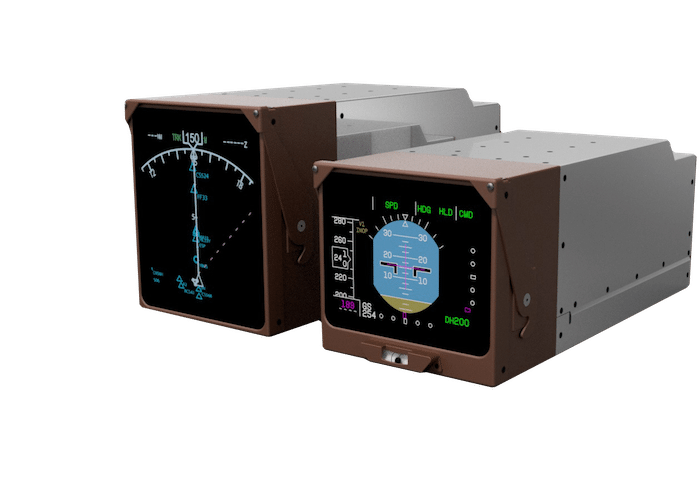
The TFD-7000 LCD display upgrade from Thomas Global Systems. (Thomas Global Systems)
A major North American operator of Boeing 757 and 767 commercial aircraft is upgrading its fleet with new liquid crystal displays (LCD) manufactured by Thomas Global Systems. The airline has not given permission for its name to be used, but Thomas CEO Angus Hutchinson revealed exclusive information on the deal to Avionics.
The upgrade will replace the Rockwell Collins cathode ray tube (CRT) displays featured as standard equipment on Boeing 757s and 767s with the new TFD-7000 display system from Thomas. The main driver of the upgrade was the need to address CRT obsolescence.
Hutchinson said that Toshiba, which provides some of the main components for CRT display systems featured on in-service aircraft, will be closing its main CRT factory in 2020. That will drive the need for many of the airlines flying aircraft still equipped with CRT displays to eventually upgrade or face major obsolescence issues.
“Operators have pretty big investments in their existing flight decks and Boeing has been continually expanding flight deck functionality recently,” Hutchinson said. “There are still some pretty new flight decks out there with CRTs still flying around, and we want operators to get the most out of that original flight deck investment.”
Thomas Global first unveiled the certified version of its CRT-to-LCD upgrade at the 2018 AMC/AEEC General Session. The Australian manufacturer describes the upgrade as a “plug-and-play” installation, with no rewiring or major flight deck modification required. No flight crew retraining is required when upgrading to the TFD-7000s.
“It’s an FPGA (field-programmable gate array)-based system that takes the analog output from the symbol generator and converts it into a digital image, and displays it on LCD screen,” said Arnold Oldach, a senior avionics adviser for Thomas Global. “So whatever the symbol generator outputs is displayed exactly the same as if it were displayed on a CRT.”
The majority of new, in-production commercial airliners feature LCD displays as standard equipment. However, there are still thousands of aircraft in service with CRTs.
Other major factors driving airlines to transition from CRT to LCD displays are the weight reduction and reduced cost of maintenance associated with LCDs compared to CRT displays. CRTs require up to 50,000 volts and generate a lot of heat, while LCDs can use power in the 5-volt range.
Oldach said the TFD-7000 will provide the airline with Thomas Global’s adaptive-display architecture. The new display will retain the use of the aircraft’s existing symbol generators, electronic flight instrument system (EFIS) controllers and EFIS select panels. It is also capable of achieving design assurance level (DAL) A.
“The EICAS (engine indicating and crew alerting system) displays in the middle of most of today’s cockpits are DO-178 and DO-254 DAL A, and that is significant for the switch from CRT to LCD because it means these displays can fit within any slot on the aircraft,” Oldach said.